It sometimes feels as if Jeff VanderMeer lives in a world far removed from our own. The American writer was once referred to ‘the weird Thoreau’ and even a cursory look at his work is enough to show why that peculiar description is so apt. In 2004, VanderMeer published a book of short stories called Secret Life, collecting 23 tales ranging from the merely fantastical to the downright surreal. One of those stories resonated powerfully with another American artist, the cartoonist Theo Ellsworth, who decided to try and adapt the title story for another medium. The result is a graphic novel packed with intricate detail and panels of extraordinary beauty. What makes it particularly resonant for our time is its focus on life in the workplace, a space that now seems almost mythical in our pandemic-ravaged world. At the heart of the book lies an intriguing question about what we consider real—the world that came before us, or the one we have spent all our time as a race trying to create.
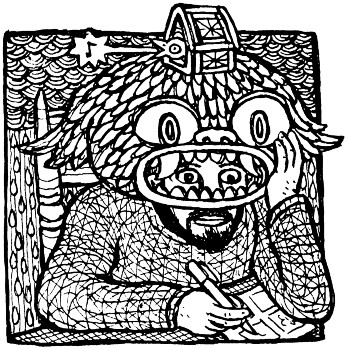 We had a few questions for Ellsworth about why he chose to work on this story, influences on his art, and whether Instagram plays any role in his development as an artist. Here are his responses.
We had a few questions for Ellsworth about why he chose to work on this story, influences on his art, and whether Instagram plays any role in his development as an artist. Here are his responses.
BROKEN FRONTIER: Jeff VanderMeer’s stories often come across as a gift for anyone interested in art or design, because of how fantastical his world-building is. How did you come across his work and why did you choose to immerse yourself in it in the way you obviously have?
THEO ELLSWORTH: He actually found my work first, amazingly, and was recommending it on social media. I wrote to thank him and it kind of sparked off a friendship. As a result, I got to be an early reader of his novel, Borne, which I loved. We did a few projects together before the graphic novel idea came about. I made a big woodcut art piece of the giant bioengineered bear, Mord, which he took with him on his book release tour for Borne. I also contributed to the new printing of his creative writing book, Wonderbook. Meanwhile I was reading a lot of his other books and really connecting with it. Making a graphic novel just seemed like a natural fit, while at the same time feeling like an exciting new challenge in a direction I’d never gone before.
BF: You began your career with mini-comics. Do you think of them as short stories, in terms of how creators of both are compelled to be concise and economical?
ELLSWORTH: I do have a huge appreciation for the craft of the short story. Adapting a short work of prose into a comic in a way that really lets it live and breathe really turns it into something new. Jeff’s original story comes to 17 printed out pages and the graphic novel is 184. I do love making short comics too. I’ve been contributing 1-page comics to the anthology, NOW, published by Fantagraphics for a while and I really love trying to capture a satisfying arc or moment in such a limited space. I’d love to eventually have enough of them to put together a collection made entirely of 1-page comics.
BF: The mythical creatures of your debut, Capacity, could fit into VanderMeer’s world without much of a fuss. Did the two of you have a conversation about this while you were working on Secret Life?
ELLSWORTH: Capacity is actually the book that led to us being in touch. He found a copy at the Librairie Drawn and Quarterly bookstore, which really feels like foreshadowing now. At our recent book release event, we tried to trace some of the interconnecting things that led to this project and decided you’d need to create one of those detective-collages on the wall with photos and string pointing everywhere.
BF: You and VanderMeer were both born in relatively small cities (Bellefonte, Pennsylvania and Missoula, Montana). What were the kinds of books you grew up reading?
ELLSWORTH: I was actually born in Los Angeles, but I did mostly grow up in Missoula. I grew up reading lots of comics. The hand-drawn worlds and colorful weirdness of 70s and 80s superhero comics always filled me with a sense of wonder, even when they weren’t exactly well-written. I didn’t discover alternative comics until much later.
BF: How would you describe your solo artwork? There is sometimes a strong Asian influence that comes through. Is that accurate?
ELLSWORTH: I think of my solo art work as inward-facing. I’m usually directly trying to interact with and explore the subconscious in some way. The process is incredibly cathartic for me. The feeling of relaxed concentration I get while I draw really helps me to be a less anxious person. The art feels like a natural growth or extension of myself, so it’s never easy to narrow it down to specific influences. I do strongly relate to a lot of outsider art, folk art, and obsessive art. Work that seems made from an inner-impulse or achieved through a trance-like concentration feels really impactful to me.
BF: There is a strong sense of something almost disconcerting when one reads VanderMeer’s work (the novel Borne comes to mind). What tools does a cartoonist deploy to render an emotional state using art and colour?
ELLSWORTH: I tried to treat all of the characters in Secret Life as real people that I needed to empathise with in order to draw them with the right kind of sensitivity. In some ways, I think of the act of drawing as an extension of the sense of touch. I have to be able to feel it in order to draw it. I also put a lot of emphasis on pacing and making every page spread feel like it had the proper flow, suspense, and atmosphere. I feel like I came away from this project with a much stronger appreciation of the craft of comics and I’m hoping to keep pushing forward and exploring that even more.
BF: One of the panels in your early work depicts a bunch of fantastical creatures, with the explanation: ‘Since I was very young, I have known that I was meant to tell the stories of the characters that I see inside my head.’ Does that still drive everything you do?
ELLSWORTH: One of the things that made working on Secret Life so fun and meaningful was the fact that the characters were decidedly NOT inside of my head. The story felt like an uncanny puzzlebox from the outside world that I got to unpack and envision. I feel like this process turned me into a better cartoonist and It’s really helped me get back to some of my more inward work from a new vantage point.
BF: You are quite popular on Instagram. Does social media influence your approach to work, or the work itself, in any way?
ELLSWORTH: I try not to let it influence what I do, but who knows, it’s an addictive force that tends to sneak its way in and make you consider things differently. It’s a tool that I’m thankful for. It’s how I connected with Jeff! But when I’m alone in my studio, I try to just deep-dive into the work and not let the weight of the social media world hover over my shoulder. I’m trying to stay true to the creative impulse that feeds me and gives my life more depth and meaning. I’d be doing this without an audience. The process itself is a physical, tactile thing, and that’s what gives it vitality to me. Social media is just the digital space where things can be shared and connections can be made, but the work itself comes from a personal process that needs to be experienced away from all that.
BF: Do you have plans for further adaptations of work by writers who inspire you?
ELLSWORTH: I loved making this book. Ideally, I’d like to always have a book in the works with an author, while simultaneously working on books that are just me. I feel like it helps me strike a really nice balance. Right now, I’m working on a book with an author named Dara Horn and I’m trying to finally finish a big book of my own called Myth Math. If I can keep the momentum going on both of those projects, I’ll be thrilled. There’s a number of older short stories I’ve daydreamed about adapting and authors I’d love to work with, but for now, I’m just hoping to follow through with these current projects and give them the time they need.
Also available from Gosh! Comics here
Interview by Lindsay Pereira





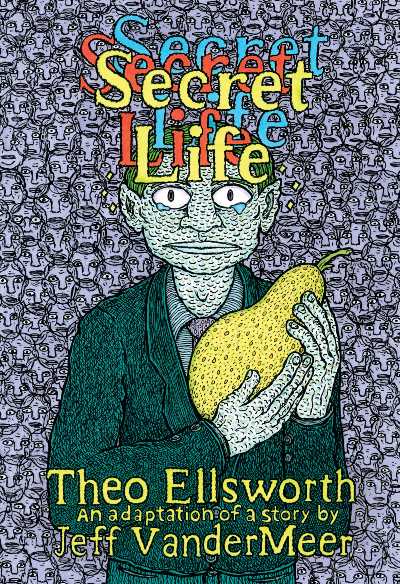
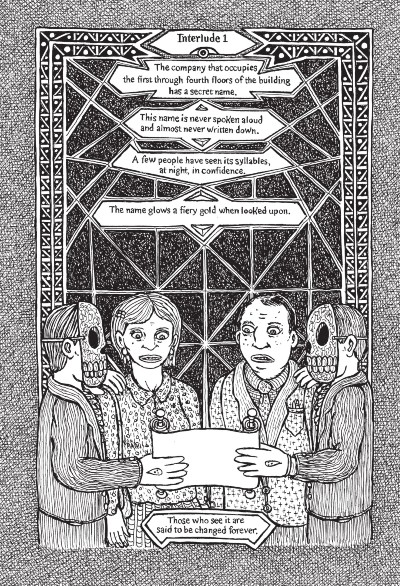
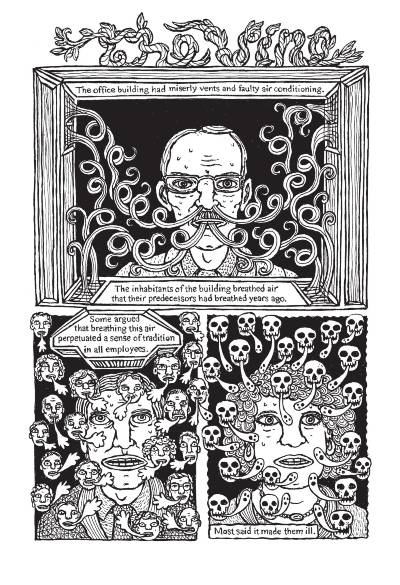
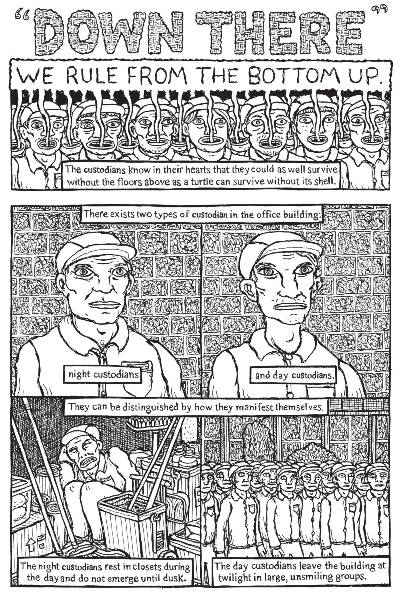
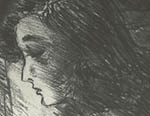
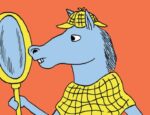
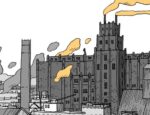
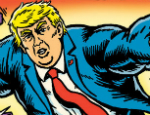
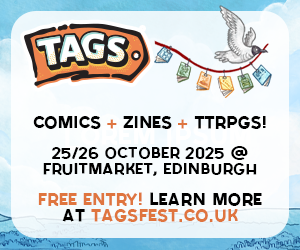

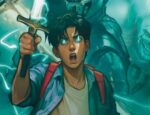
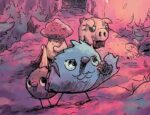
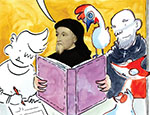
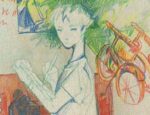
[…] Pereira talks to Theo Ellsworth about Secret Life, organic collaborations, comics origin stories, and inward-facing […]